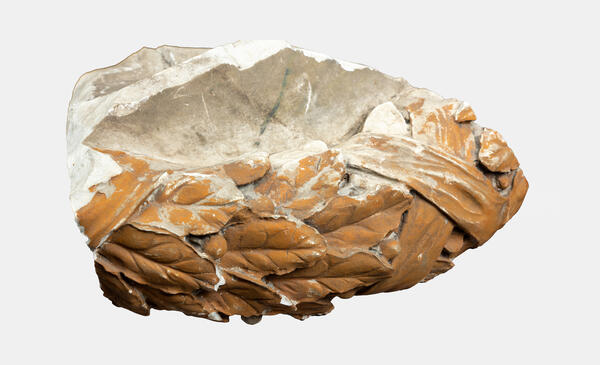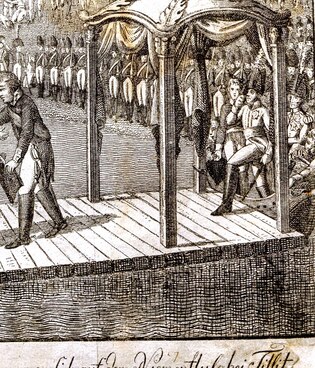The fragments of the German monument by Gustav Eberlein were discovered in the spring of 2014 while laying the foundation for the new monument. A part of the pedestal with an oak wreath and several fragments of the sculpture itself, including the cleavage area of Queen Louise, were recovered by the builders from a meter depth. Paving tiles with cornflower motifs, which had been used to pave the walkway to the monument, were also found during the construction work. The finds joined the collection of the Museum of the History of the City of Sovetsk.
The creator of the original monument, Gustav Eberlein, was a famous German sculptor, painter and writer. The future sculptor was born into the family of Joseph Eberlein, a tax official. As a young man, he trained as a jeweler, entered the School of Art in Nuremberg, and three years later received a scholarship to continue his studies in Berlin. Gustav Eberlein’s greatest successes were in portraiture and small sculpture. At the turn of the 20th century, he was the most sought-after master of the Berlin sculpture school in Europe following its chief representative, the sculptor Reinhold Begas.
Eberlein’s works are either decorative (e.g. decorations for some of Berlin’s luxury buildings and the University of Kiel), genre works (e.g. a statue of a young man removing a splinter from his foot) or monumental sculptures. Eberlein produced a total of more than 900 works of sculpture, painting and literature, over 600 illustrations, as well as numerous monuments in cities in Germany and abroad, including five sculptures in Buenos Aires and “The German Spring” in the capital of Chile, Santiago. His works have been exhibited several times at art exhibitions in Berlin and Munich. A number of Eberlein’s bronze statues were remelted during World War II, including the equestrian monuments to Wilhelm I in Mönchengladbach, Gera, Mannheim, and Wuppertal; the monument to Wilhelm I and Bismarck in Duisburg; and the monument to Bismarck in Krefeld.
Around 1900, Eberlein made
proposals against reconciliation between Prussia and France. He held a biased
view of the works of the French sculptors Auguste Rodin and Constantin Meunier.
Guided by Eberlein’s criticisms, the 1900 Berlin Art Exhibition removed 16 of
their 20 works.



